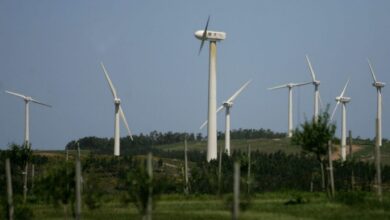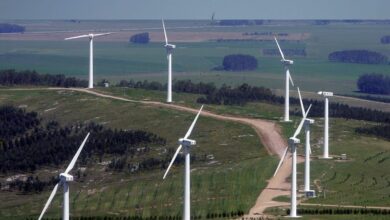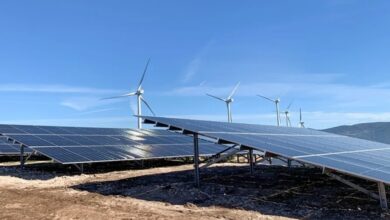Wave Energy: Initiatives in the World to Take Advantage of the Waves of the Sea
The Energy Obtained from the Waves of the Sea is Emerging as a Field with Many Possibilities for Sustainable Projects.

Photo: Ing. Guido Grassow
LatinAmerican Post | Daniel Alejandro Vergara
Listen to this article
Leer en español: Energía undimotriz: Iniciativas en el mundo para aprovechar las olas del mar
With the current climate crisis, research and efforts are carried out daily to create new types of clean and renewable energy that allow us to abandon fossil fuels and energy practices that affect the environment. That is why, in various parts of the world, for some years now, there has been talk of wave energy, a type of environmentally sustainable energy generated by the movement of waves in the oceans.
According to researcher Christine Miller, the idea of extracting energy from waves dates back to the beginning of the 21st century. However, the necessary technology to develop some kind of invention did not exist. In 2000, a first commercial wave energy prototype was installed off the coast of Islay, Scotland, which would later be connected to the island's electricity grid. Gradually, with public and private efforts, new projects have begun to be created in the rest of the world.
Although it is not one of the best-known and worked-for renewable energy sectors, there are currently 4 projects that are generating significant results in various countries:
Wave Line Magnet:
It is a power generator created by the company Sea Wave Energy Limited. Its appearance is similar to that of a spine and is made up of several floating and flexible columns capable of perfectly following the movement of the waves. The World Energy Trade portal states that this device can generate up to 100 MW of power and its production cost is low because it can be made from recycled plastics. Without a doubt, the Wave Line Magnet solves one of the main problems of renewable energies, high costs vs. energy production.
We suggest you read: Clean, healthy and sustainable environment: a new human right
Wave Swell:
This generator is totally different from the previous one, it is based and inspires in a spiracle and is fixed from the bottom of the sea to the surface. The unit allows the entry and exit of the waves but captures the air generated from them to push various turbines. The project has been tested in the Bass Strait in Australia and for 1 year has supplied power for the local population. In an interview for World Energy Trade, the CEO of Wave Swell, Paul Geason, stated that the generator had achieved conversion rates of 48%, indicators that exceed other clean and renewable energy projects.
EWP-EDF ONE:
It is the name of the project that was recently installed on the shores of Tel Aviv, Israel, by the company Eco Wave Power. The unit consists of the use of floats that capture the movement of the waves and generate energy. Since August 1 and after the tests of the pilot project, the necessary permits and actions are being processed to connect the floating units to the local and national electricity grid of Israel.
Ocean Renewable Power Company (ORCP):
This company, with a subsidiary in Chile, has reached an agreement to install a wave power generation system in the municipality of Chile Chico in Patagonia. The community is very attentive because in 2023 it will probably be the first or one of the few in the entire Latin American region that uses wave energy as a partial source of electricity.
The device to be installed is a RivGen Power that is already being used in Alaska and that according to World Energy Trade is the longest hydrokinetic project in all of America. According to the executive director of ORCP, Stuart Davies: “the project in the community of Igiugig – Alaska- has allowed the reduction of the use of diesel as a source of energy. The installation of a second device, together with an energy storage system and smart microgrid controls, is allowing the community to reduce its diesel consumption by between 60% and 90% this year”.
This project is important for Latin America, since its operation depends on the region and its governments continuing to open the doors to renewable energies such as wave energy. Likewise, this new energy sector is showing that it can not only outperform traditional energies in terms of effectiveness, but also that it can enter the sustainable energy market with good profit margins.




